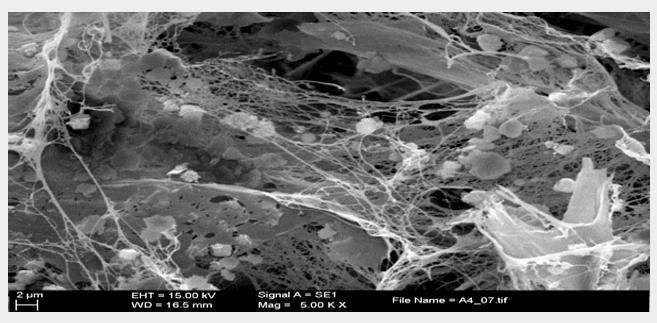

Abstract
We present some of the latest findings regarding stem cells in this article. First, a study recently published in the journal Nature describes significant steps in the process of obtaining stem cells with embryonic properties.
Moreover, a team of researchers at UIC (Barcelona) isolated a pluripotential adult stem cell from the dental pulp of the wisdom teeth of patients aged 15 to 60 years old and have demonstrated their capacity to generate tissues.
Although full application of stem cells is still far from materializing, it is a field in which researchers are working intensely and there will certainly be advances in the future.
Article
All the fingers in science point toward stems cells when discussing the future: for several years stem cells have been considered the basis of a cross-sectional, nearly ubiquitous science, with huge potential for the treatment and cure of certain chronic diseases.
After a decade of research, some incredible strides forward have been made in realizing the potential of stem cells, but it is still far from materializing. In addition to the natural periods that any investigation must respect to minimize risks and ensure benefits, stem cell research bumps up against ethical and social barriers due to the primal source of these cells: the human embryo. Scientific teams around the world have made efforts to find another source to avoid a moral thicket without slamming this promising door shut.
A study has shown for the first time, in mice, that abusing an adult cell by immersing it in a very acidic environment can return it to a state similar to the embryonic state, in which it can differentiate into any lineage of the organism. This finding, recently published in the journal Nature, represents a revolution in the field of regenerative medicine because it constitutes the easiest, fastest, and possibly least dangerous way to obtain embryonic stem cells with such properties (without having to manipulate embryos) used since these cells were discovered in 2006 by Shinya Yamanaka. The problem with the technique of Yamanaka––Nobel Award for Medicine in 2012––is that four genes have to be inserted into the cell by retroviruses for it to regress to its original state. These ingredients are linked to tumors in humans, which in practice has delayed the implementation of this method. Other research groups have gradually managed to reduce the elements required to obtain cells similar to embryonic stem cells (better known as iPS, or induced pluripotent stem cells). These cells, according to researchers, are not yet ready for clinical use because the virus remains integrated in the cell.
![]()
Recently, a team of researchers from the School of Dentistry, International University of Catalonia (UIC), which I had the opportunity to coordinate, has succeeded in isolating a pluripotent adult stem cell without genetic modifications from the wisdom teeth of patients aged between 15 and 60 years. This type of stem cell extracted from dental pulp, DPPSC for its acronym in English (Dental Pulp Pluripotent Stem Cells), is not in itself a novelty, but the cell holds out new hope for the scientific community working in the field of regenerative medicine .
The study has demonstrated the capacity of DPPSC to generate tissue with characteristics associated with the mesoderm, endoderm, and ectoderm (osteoblasts, hepatocytes, and neurons).
Our team has investigated the third molar because it is the last tooth that develops in humans, it is normally in an earlier stage of development, and it is capable of providing an optimal amount of dental pulp tissue for the isolation of adult pluripotent stem cells.
In addition, the third molar is frequently extracted for eruption problems, so it seems ideal for a possible tissue bank. Researchers have observed that these cells are always present in the dental pulp and they have concluded that it is always possible to isolate these cells, regardless of age.